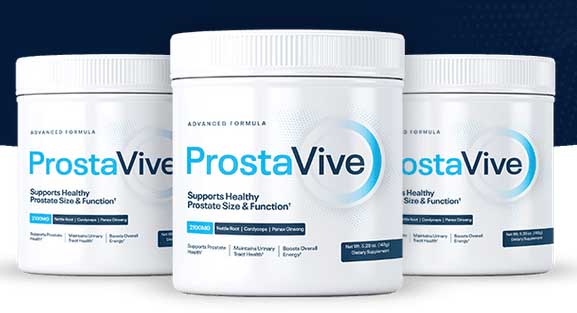Alright, folks, let’s dive into the thrilling world of plumbing—no, not the kind that involves wrenches and leaky faucets, but the internal kind that keeps us running smoothly. Today, we’re tackling the epic showdown between Overactive Bladder (OAB) and Benign Prostatic Hyperplasia (BPH), also known as an enlarged prostate. Buckle up; it’s going to be a wild ride through the urinary tract!
Meet the Bladder: Your Personal Balloon
First up, let’s talk about the bladder. Think of it as a stretchy balloon that holds urine until you’re ready to release it. When it’s functioning correctly, it’s like that friend who knows how to hold their liquor—steady and reliable. But sometimes, things go awry, leading us to our first contender: the Overactive Bladder.
Overactive Bladder (OAB): The Bladder That Cried Wolf
OAB is like that overzealous coworker who hits the panic button for every minor issue. It’s characterized by a sudden, uncontrollable urge to urinate, even when your bladder isn’t full. Imagine your bladder throwing a tantrum, demanding attention at the most inconvenient times. The main symptoms include:
- Urgency: That “drop everything and run” feeling.
- Frequency: Visiting the restroom more than eight times in 24 hours. Your toilet starts feeling like a second home.
- Nocturia: Waking up more than twice a night to urinate. Say goodbye to uninterrupted sleep.
- Urge Incontinence: Leaking urine before you can reach the bathroom. Because who doesn’t love a surprise?
These symptoms can be disruptive, making long meetings, road trips, or movies feel like endurance tests.
Benign Prostatic Hyperplasia (BPH): The Prostate’s Midlife Crisis
Now, let’s shift gears to BPH. The prostate is a walnut-sized gland that hangs out below the bladder, surrounding the urethra—the tube that carries urine out of your body. As men age, the prostate can decide to bulk up, sometimes growing from walnut to lemon size. This growth can squeeze the urethra, leading to urinary issues.
Symptoms of BPH include:
- Weak Urine Stream: Like trying to water your garden with a kinked hose.
- Hesitancy: Standing at the toilet, waiting for something to happen, while contemplating life’s mysteries.
- Dribbling: That annoying post-urination drip that makes you question if you’re ever truly done.
- Incomplete Emptying: Feeling like your bladder is holding onto a secret stash of urine.
- Nocturia: Frequent nighttime bathroom trips, turning you into a nocturnal creature.
While BPH isn’t life-threatening, it can be a significant nuisance, affecting your quality of life and sleep.
The Great Confusion: OAB vs. BPH
Here’s where things get tricky. Both OAB and BPH can lead to frequent urination and nocturia, making them easy to mix up. It’s like mistaking decaf for regular coffee—both are coffee, but they affect you differently.
The key difference lies in the cause:
- OAB is due to involuntary bladder muscle contractions. Your bladder is essentially misfiring, sending urgent signals even when it’s not full.
- BPH is a mechanical issue. The enlarged prostate obstructs the flow of urine, causing the bladder to work harder, which can lead to irritability and those frequent urges.
Understanding the root cause is crucial for effective treatment.
Diagnosis: Playing Detective
To unravel the mystery, doctors may employ several tactics:
- Medical History and Symptom Assessment: Discussing your symptoms, their onset, and how they’re impacting your life.
- Physical Examination: Yes, this may include the infamous digital rectal exam to assess prostate size. It’s as fun as it sounds.
- Urinalysis: Testing your urine for infections or other abnormalities.
- Uroflowmetry: Measuring the speed and volume of your urine flow. Think of it as a speed test for your plumbing.
- Post-Void Residual Measurement: Checking how much urine remains in your bladder after urination. A bladder that’s holding back might indicate BPH.
- Urodynamic Testing: Evaluating bladder pressure and function to identify involuntary contractions indicative of OAB.
Treatment Options: Restoring Order
Once the culprit is identified, treatment can commence.

For OAB:
- Lifestyle Modifications:
- Bladder Training: Teaching your bladder who’s boss by scheduling bathroom visits.
- Dietary Changes: Cutting back on bladder irritants like caffeine, alcohol, and spicy foods. Yes, that means reconsidering your love for coffee and hot wings.
- Pelvic Floor Exercises (Kegels): Strengthening the muscles that control urination. Time to get those muscles in shape!
- Medications:
- Anticholinergics and Beta-3 Adrenergic Agonists: These fancy-named drugs help relax the bladder and reduce those urgent signals.
- Advanced Therapies:
- Botox Injections: Not just for wrinkles! Botox can calm an overactive bladder.
- Nerve Stimulation: Techniques like InterStim therapy can modulate the nerves controlling the bladder.
For BPH:
- Watchful Waiting: If symptoms are mild, sometimes the best action is no action—just regular monitoring.
- Medications:
- Alpha-Blockers: Relax the muscles of the prostate and bladder neck, improving urine flow.
- 5-Alpha-Reductase Inhibitors: Shrink the prostate over time by blocking hormones that cause growth.
- Minimally Invasive Procedures:
- UroLift: Lifts and holds the enlarged prostate tissue out of the way, opening the urethra.
- Rezum Therapy: Uses steam to reduce prostate size. Yes, steam—like a spa day for your prostate.
- Surgery:
- Transurethral Resection of the Prostate (TURP): The classic “roto-rooter” procedure to remove excess prostate tissue.
- Holmium Laser Enucleation (HoLEP): A laser technique to carve out the enlarged prostate tissue.
When to Seek Help:
If you’re experiencing urinary symptoms that disrupt your life, don’t suffer in silence. Consult a healthcare professional to determine the cause and appropriate treatment. Remember, while these issues are common, they’re not an inevitable part of aging, and effective treatments are available.
Conclusion:
Navigating the waters of urinary issues can be daunting, but understanding the differences between OAB and BPH is the first step toward reclaiming control. Whether your bladder is crying wolf or your prostate is staging a coup, solutions exist
Best
Al
PS Want to add to the conversation? Leave a comment below!
